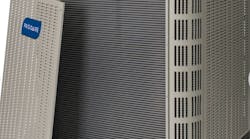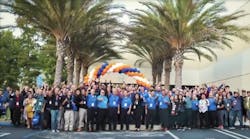"The future ain't what it used to be."
- Yogi Berra
Successful businesses of all sizes and stripes understand the value of planning for the future — the process of strategically developing such a plan gives the executive team an opportunity to step back and take a long-range view of their company, their competition and the industry. Look to the future and chart your course.
Likewise, the HVACR industry associations understand the value of planning ahead, and they actively look to the future through the Joint Futures Committee, which meets annually to develop comprehensive recommendations about what the industry association and its members should be doing in order to be prepared.
ACCA and AHRI established the Joint Futures Committee in 2003. (HARDI joined the committee shortly after its formation, and other associations, such as IAQA and NAHB, have since joined.) The committee was developed as a means to bring together industry players — distributors, contractors, OEMs, associations, builders and even members of the trade press — to identify strategic issues that may impact them three to six years in the future and then make recommendations on actions that each stakeholder should be taking to meet those issues head on. Those recommendations are then presented to each industry association board for their consideration.
The recommendations are only that — recommendations — and each board is free to do what they want with them, notes Glenn Hourahan, vice president of Research and Technology for ACCA and secretary of the committee. "With these recommendations, we're saying, 'here's how the future could look. What do you want to do about it?'"
The proactive nature of the Joint Futures Committee and the willingness of the various industry associations to work together on behalf of their members make it unique in the industry. "Each company does strategic planning, and that's what this is," Hourahan notes. "We're doing it with allied stakeholders to ensure that we have the OEMs, distributors, contractors and others all in the loop."
Don Frendberg, executive vice president and COO of HARDI, says the Joint Futures Committee has been "extremely valuable" because of the collective input of a diverse group of HVACR industry participants who are identifying issues of potential concern to the industry. "The committee is well organized and is extremely efficient at drilling down and clarifying issues that are often times difficult to clearly articulate," he says.
The committee was born out of frustration by many in the industry about new products or technologies from OEMs that would seemingly come from out of the blue. The OEMS were frustrated that the HVACR distributors and contractors were slow to embrace the new products, while the distributors and contractors complained that they didn’t know what to do with the latest and greatest from their OEM partners.
Enter the Joint Futures Committee to help create a bridge to the future — or at least to erect some guideposts.
One of the major dilemmas that the committee faces when it holds its annual meeting is how to separate the issues of the future from the issues that its members are confronting in the here and now. For example, topics such as workforce training and retaining HVACR professionals are issues that the industry faces today.
To help separate the present from the future, ACCA sends out a Web survey to the committee members months before the annual meeting, asking them to post the issues that they believe will be front and center for the industry in the next three to five years. Those issues are there for the committee members to amend and build on. After about two months, ACCA takes all of the input and goes through the process of compiling and merging the suggestions into various categories and items.
With approximately 28 members on the committee, Hourahan notes that the ACCA staff must take upwards of 200 topics and get them down to a manageable number that they then send to the members to rank in terms of importance and the time frame for when they expect these issues to be relevant — whether it’s now, within one to three years, or during the three-year and onward time frame. That helps to shape the issues when the committee meets in person. Members of the 201011 Joint Futures Committee from the HVACR distribution community include Randy Tice of APR Supply Co., Bill Shaw of Standard Supply Co. and Don Frendberg, executive vice president and COO of HARDI.
Page 2 of 2
When the committee meets in person, they winnow the list even further until they are ready to vote on the priorities. What typically emerges are two or three top priorities. The committee then breaks into sub-teams so that each team can focus on one priority and develop a detailed position about its impact and how to address it.
During the recent Joint Futures Committee meeting in May, members made three recommendations:
- Establish a joint-association NetZero Energy (NZE) Task Force to define our common approach, educate others, and participate on behalf of the industry in support of the NZE movement.
- Develop organizational knowledge on distributive energy technologies and their opportunities, become engaged, and partner with key players.
- Develop consumer outreach and educational programs that promote energy savings through the retrofitting of existing buildings/homes.
The boards of the industry associations, including HARDI, will take up these recommendations during the ensuing few months and decide on which recommendations they may pursue.
Hourahan says many of the committee’s recommendations have been adopted by some or all industry associations and have been properly positioned in the HVACR industry as market forces have shifted. He says one of the first committee recommendations was to establish national standards creating quality benchmarks for HVACR installations of residential and light commercial projects. Under the leadership and direction of ACCA, stakeholders, including the HVACR associations, manufacturers and utilities, worked to create installation performance standards entitled HVACR Quality Installation Specifications.
Another important outcome of the committee's work was establishment of the HVACR Industry Alliance, chaired by Frendberg. The alliance, made up of 14 industry association executives, is establishing a foundation that should be fully functional by the end of the year. Frendberg says the foundation will provide the resources and support to raise awareness of the HVACR industry and the role it plays in the daily lives of people, provide leadership and coordination for projects and other programs related to HVACR workforce development and recruitment, and develop educational materials to recruit prospective workforce candidate to HVACR.
Hourahan says the committee has had a good mix of members during its seven years of existence. "The committee members really enjoy doing this," he says. "They learn things throughout the discussion process, and it gets you thinking about what’s coming down the pike."
Michael Maynard is a business writer based in Providence, RI. He writes frequently on HVACR, construction and architecture issues. Contact him at [email protected].
HARDI Hydronic Heating and Cooling Council to take on committee's recommendations
Until this year, there were never any recommendations from the Joint Futures Committee that addressed the issues related to the HARDI Hydronic Heating and Cooling Council. That is changing.
The council has undertaken the committee's recommendations to study both the applicability of engaging and partnering with key players in distributive power generation and to determine HARDI's potential role in supporting the movement to net-zero energy buildings, says Don Frendberg, HARDI executive vice president and COO.
"I expect this will be a major item of deliberation at the HARDI Fall Conference in Houston," Frendberg says. "A formal recommendation to the HARDI Board to pursue the initiative is possible."
Glen Hourahan, secretary of the Joint Futures Committee and vice president of research and technology for ACCA, says none of the committee's recommendations over the years specifically addressed hydronics because "most of the pressing, unresolved hydronic needs are 'today's'’ issues, not tomorrow's." Hourahan adds: "Being an application that has existed for over 100 years in modern HVACR (and longer if you go back to the Greeks and Romans), it's difficult to include hydronics in a listing of pressing needs that are three to six years out."





